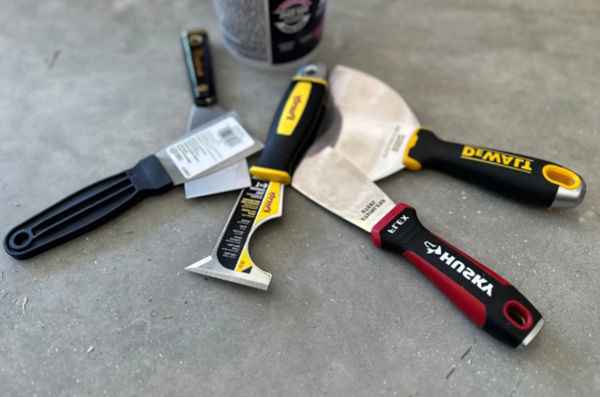When it comes to choosing the right putty knife for your painting, drywall, or repair projects, one important factor to consider is the blade material. The two most common options on the market are carbon steel and stainless steel putty knives. While both are designed to apply and scrape putty or other materials, each type of steel offers unique advantages and disadvantages. So, which one is better? The answer depends on your specific needs and preferences. Let’s explore the differences between carbon steel and stainless steel putty knives to help you make an informed decision.
What Is a Putty Knife?
A putty knife is a versatile hand tool used for applying filler materials such as spackling paste, drywall compound, or wood putty. It’s also useful for scraping off old paint, removing wallpaper, or cleaning surfaces. Putty knives come in various sizes and blade flexibilities, but the blade material—carbon steel or stainless steel—significantly affects the tool’s performance and durability.

Carbon Steel Putty Knives
Pros:
-
Sharpness and Rigidity:
Carbon steel blades are known for their strength and ability to hold a sharp edge. This makes them excellent for tasks that require scraping or cutting through tough materials like old paint, caulk, or adhesive. -
Precision:
The rigid nature of carbon steel gives you better control when applying or smoothing filler, especially in tight or detailed areas. -
Lower Cost:
Carbon steel putty knives are typically more affordable than their stainless steel counterparts, making them attractive for occasional or budget-conscious users.
Cons:
-
Rust Prone:
The biggest downside of carbon steel is its tendency to rust and corrode if not properly maintained. Exposure to moisture can quickly degrade the blade, which means you’ll need to clean and dry it after each use. -
Maintenance Required:
To extend its lifespan, carbon steel tools should be oiled or kept dry between uses—something not all users are willing to do.
Stainless Steel Putty Knives
Pros:
-
Corrosion Resistance:
The primary advantage of stainless steel is that it resists rust, making it ideal for wet environments or jobs that involve water-based materials. -
Flexibility Options:
Stainless steel putty knives are available in more flexible models, which are great for applying smooth layers of putty or joint compound over large surfaces. -
Low Maintenance:
Stainless steel blades require little care. You can simply wipe them clean after use without worrying about rust or corrosion.
Cons:
-
Higher Cost:
Stainless steel tools are generally more expensive than carbon steel options. -
Less Rigid:
While this can be a benefit for spreading materials, it’s a drawback for scraping tough surfaces. Flexible stainless steel blades may not have the same force or edge-holding ability as carbon steel ones.
Which Is Better?
The best choice between carbon steel and stainless steel putty knives depends on how and where you plan to use the tool:
-
Choose carbon steel if you’re doing heavy-duty scraping, need precision, or want a cost-effective tool and don’t mind doing a little extra maintenance.
-
Choose stainless steel if you prioritize durability in wet environments, want easy cleanup, or prefer a flexible blade for smooth application over broad surfaces.
Some professionals even keep both types on hand to cover a wider range of tasks—using carbon steel for scraping and stainless steel for finishing work.
Conclusion
In the debate between carbon steel vs. stainless steel putty knives, there’s no one-size-fits-all answer. Each type has strengths tailored to different kinds of jobs. Carbon steel offers superior scraping power and precision at a lower price but needs careful maintenance. Stainless steel, on the other hand, excels in flexibility, rust resistance, and ease of use, though it can cost more. Assess your project needs, working environment, and usage habits to determine which material is better suited to your tasks. Whichever you choose, a good-quality putty knife is a must-have in any DIY or professional toolkit.
Post time: Jun-11-2025






